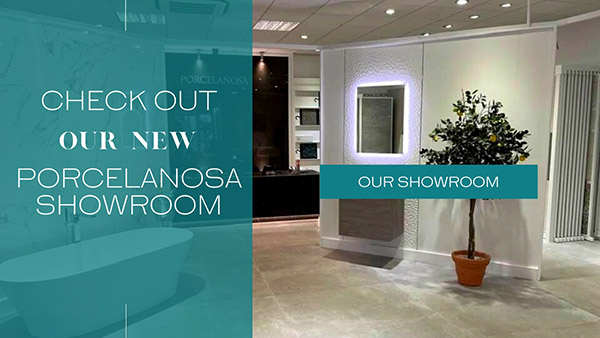With all things vintage being hugely in fashion at the moment, from time to time you’ve probably been asked by your clients whether you can salvage some of the original features of their home; tiles are often one such item which people look to save, partly because they are such resistant materials that they have stood the test of time and are therefore still present within many homes.
If you’ve ever been asked to restore your client’s vintage tiles, you’ll know the importance of getting it right when replacing a missing or broken tile; a visit to a tile warehouse is just what is needed to get the look just right for your client.
The importance of colour
When it comes to matching vintage tiles, colour is all important. Nowadays, bathroom suites very rarely come in any colour other than white; original 1950s bathrooms, however, were colourful affairs, and had tiles to match. And it’s no good getting any old pink tile to match your client’s original pink retro bathroom; it has to be the right shade.
By visiting the Ceramic Tile Warehouse, Camberley, you’ll have over one million tiles in stock to choose from. You’re bound, therefore, to be able to pick the correct shade of pink required. What’s more, you may find that your client’s original tiles are themselves different shades from one another; matching the varying colour intensity in the tiles is also important. And don’t forget that even white tiles can come in slightly different shades. If the house you’re working on pre-dates the 1930s, where white tiles were in vogue, this is an important factor to remember.
The importance of shape
Shape can be a tricky consideration when working on a client’s period home. Firstly, walls and floors are often not straight in older properties, either due to settlement, bowing or the original workmanship, or factors such as plumbing upgrades over the years may have left a gaping hole behind fixtures and fittings. You may, therefore, need to carefully cut tiles using a diamond cutter to fit uneven spaces.
Secondly, many period floor tile patterns featured intricate, almost mosaic-like patterns. If you’re working to restore such a patterned floor, why not visit the Ceramic Tile Warehouse, Surrey, for a selection of small tiles to enable you to complete the pattern? Small square, rectangular, hexagonal or even penny-round tiles are the sort of tile you’ll need to look for, laid in a basket weave, pinwheel or spiral mosaic pattern.
The importance of finish
Something important to consider when replacing your customer’s vintage tiles is the overall finish. For example, if you’re restoring a travertine farmhouse kitchen floor, you must ensure that the replacement travertine picked has the same type of finish, to keep it authentic. Similarly, tiles from the turn of the 20th century had crisp, straight grout lines created by the square edges designed to be laid closely together. Nowadays, tiles are designed to be time saving, instead. For example, tiles can be purchased with a pillow-edge to downplay grout lines, or even with crooked, uneven edges to disguise tiles which may not be perfectly in line. To achieve the authentic look, ask your tile warehouse about sharp, square edged, authentic tiles.
The importance of visiting the Art of Living, for all your tile needs
For all of your tile needs, whether vintage or modern, a visit to the Ceramic Tile Warehouse, Camberley will set you on the right path. With over one million tiles in stock at any one time, you’re bound to find something to suit your customer’s wishes. What’s more, being part of the Art of Living triangle, you’ll also be able to source natural stone at the Stone Gallery, and check out the beautiful interiors available at Park Street Interiors. No matter what type of tile you’re after, the Ceramic Tile Warehouse, Surrey, should be your first port of call.

